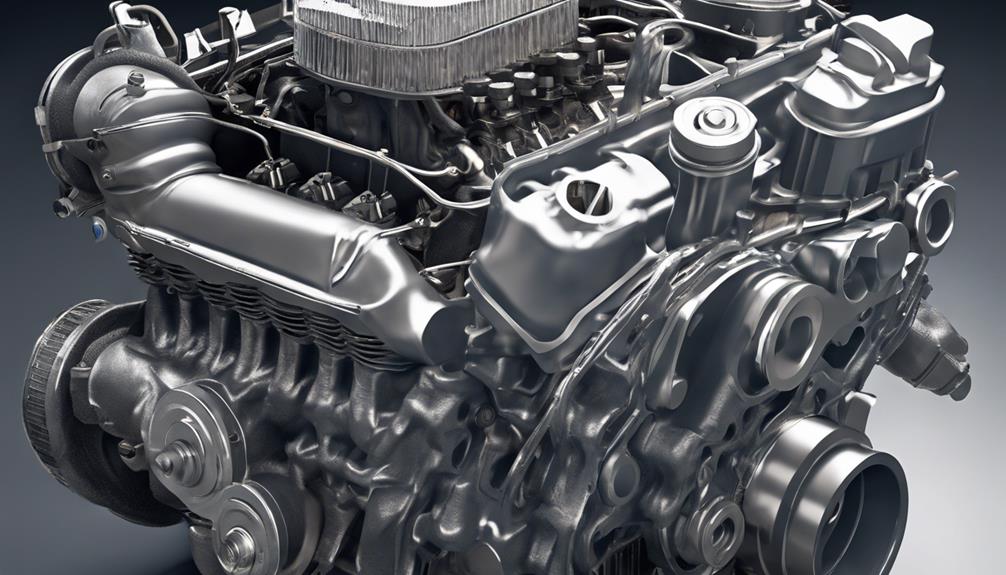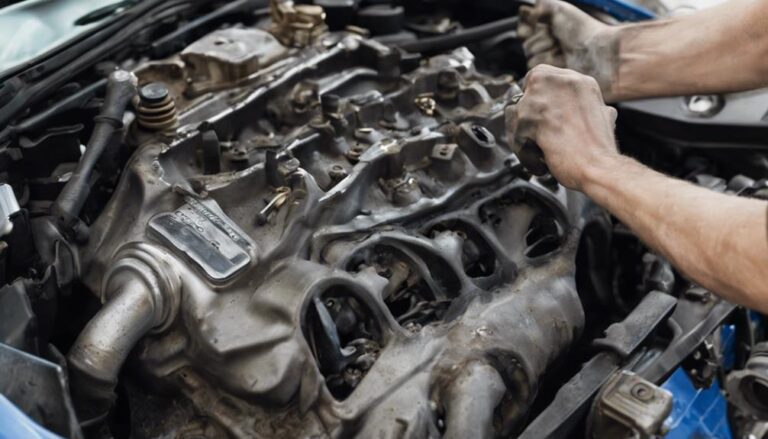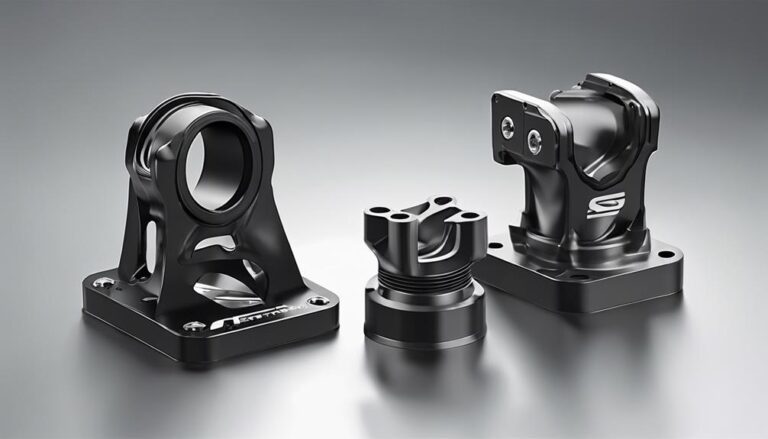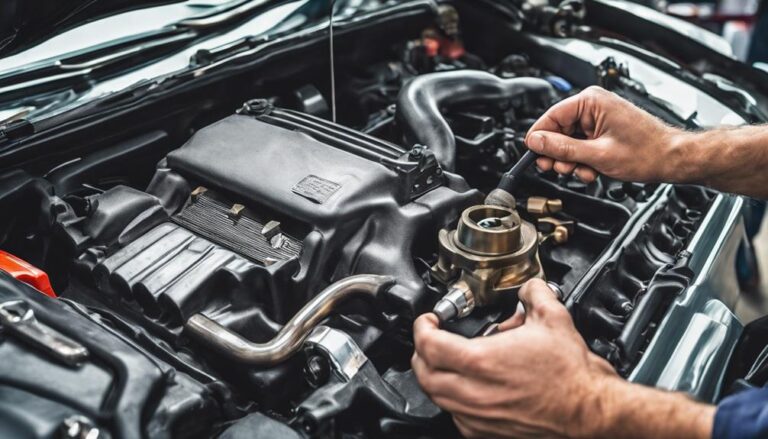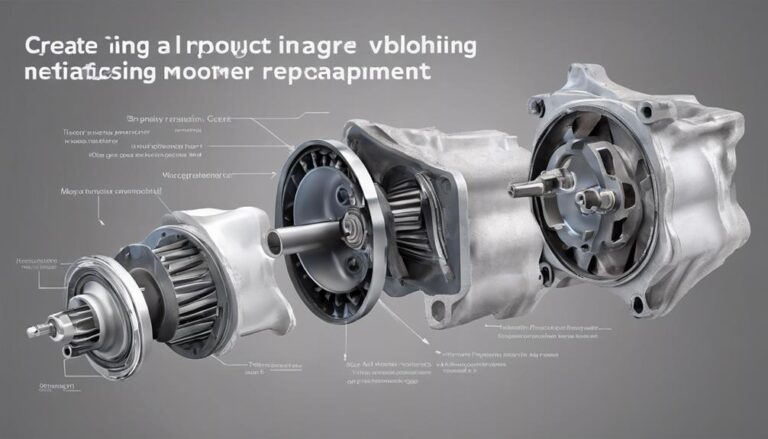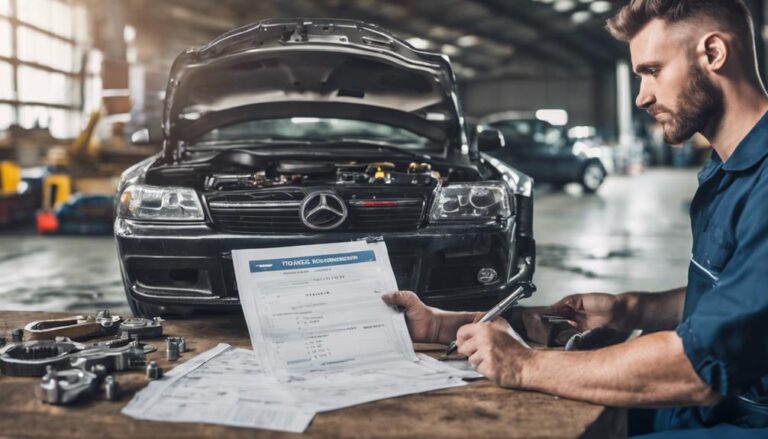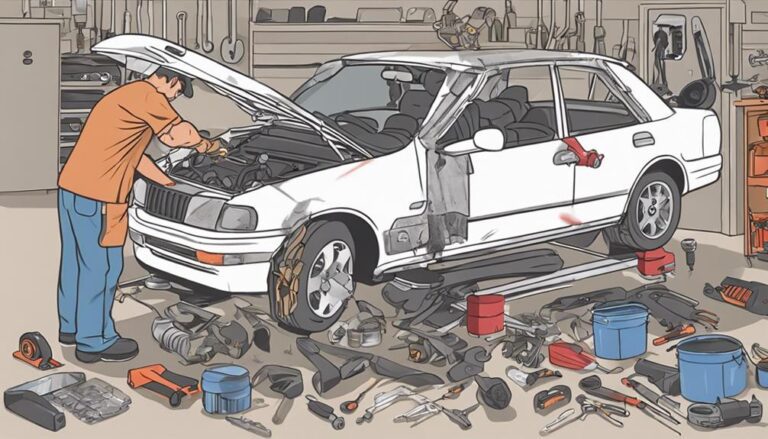5 Signs of Worn Engine Mounts in Your Car
You might think that your car's engine mounts are invincible, but let's face it, they're not. When these essential components start to wear out, they can cause some serious issues for your vehicle.
From excessive engine vibrations that feel like a massage chair gone rogue to mysterious clunking noises that make you question your car's sanity, the signs of worn engine mounts are not to be ignored. But that's just the beginning.
Find out what other subtle hints your car might be dropping to signal it's time for some attention under the hood.
Key Takeaways
- Excessive engine vibrations and clunking noises signal worn engine mounts.
- Engine movement during acceleration indicates potential mount issues.
- Visible wear like rusty bolts or cracked rubber points to mount deterioration.
- Misalignment symptoms, such as off-center steering, suggest the need for mount inspection.
Excessive Engine Vibrations
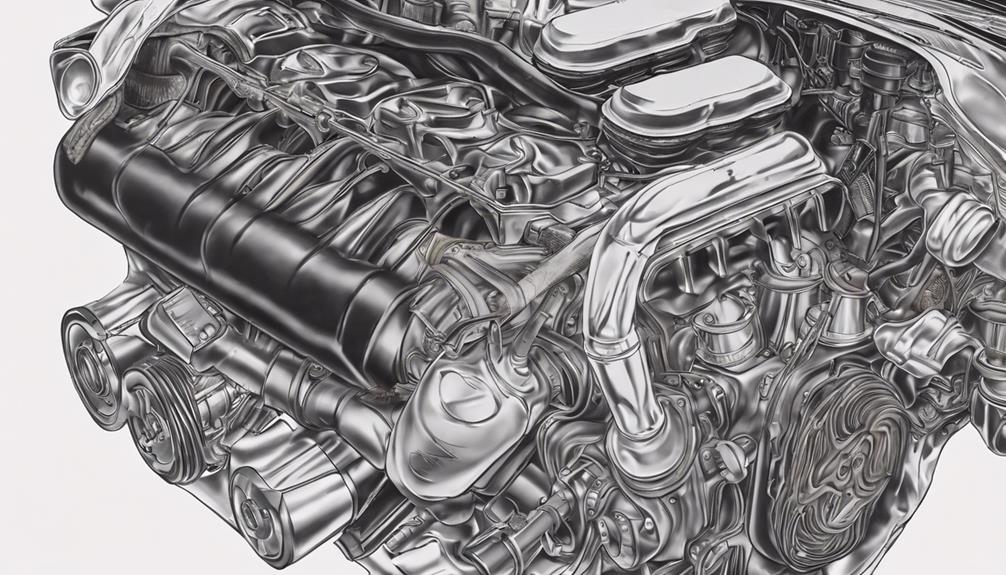
Have you noticed a significant increase in engine vibrations while driving your car? Excessive engine vibrations can be a sign of worn engine mounts. Engine mounts are important components that secure the engine to the chassis of the vehicle, reducing vibrations and noise. When these mounts wear out, the engine can move excessively, leading to increased vibrations felt throughout the car.
To address this issue, there are repair options available. Depending on the extent of wear, you may need to replace the worn engine mounts with new ones. It's essential to consult a qualified mechanic to determine the best course of action.
Regular maintenance checks are essential to detect early signs of worn engine mounts. Inspecting the mounts for cracks, leaks, or excessive movement can help prevent further damage and costly repairs. Additionally, avoiding aggressive driving and sudden acceleration can help prolong the life of engine mounts.
Proper maintenance and timely repairs are key to ensuring a smooth driving experience.
Clunking or Banging Noises
Experiencing clunking or banging noises in your vehicle could indicate potential issues with the engine mounts, a critical component responsible for stabilizing the engine within the chassis. These noises often occur when the engine mounts have deteriorated, allowing the engine to move excessively and make contact with other components. The clunking or banging sounds are typically more noticeable during acceleration, deceleration, or when shifting gears.
If left unaddressed, worn engine mounts can have a major impact on your driving experience and pose safety concerns. The excessive engine movement caused by faulty mounts can lead to misalignments, affecting the overall performance of your vehicle. Additionally, the increased vibration and noise levels can be distracting and uncomfortable for both you and your passengers.
When faced with clunking or banging noises, it's important to explore repair options promptly. Seeking professional maintenance can help diagnose the extent of the issue and provide suitable solutions to restore the functionality of your engine mounts. Regular inspections and proactive maintenance tips can also help prevent future complications, ensuring a smoother and safer driving experience.
Engine Movement During Acceleration
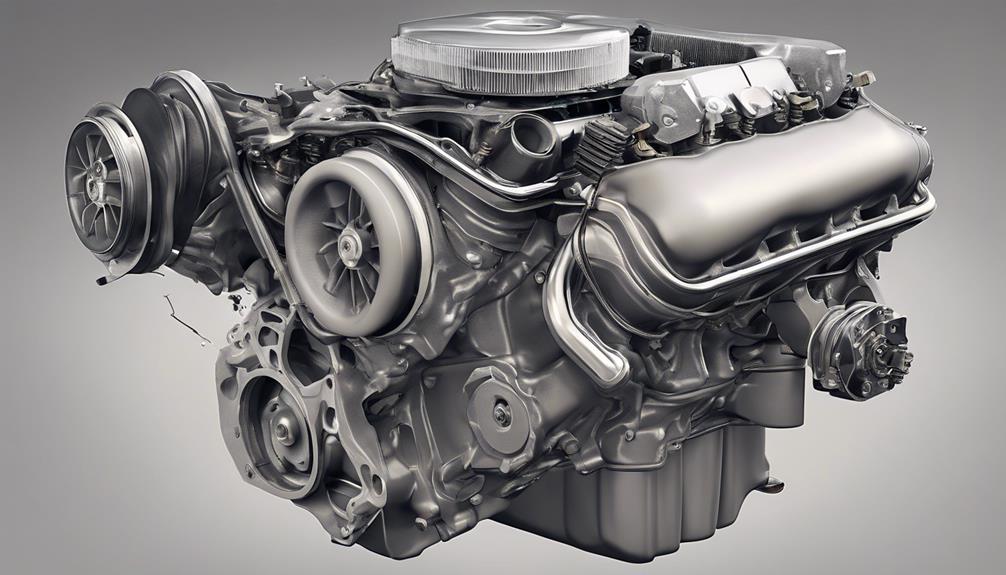
During acceleration, the engine in your vehicle may exhibit noticeable movement, indicating potential issues with the engine mounts. When engine mounts wear out, they lose their ability to secure the engine properly in place. As a result, you may observe excessive engine movement during acceleration, leading to stability concerns and affecting your car's overall performance. This increased engine movement can also cause vibrations that are felt throughout the vehicle, impacting the driving experience.
To address this issue, it's important to inspect repair options promptly. Ignoring worn engine mounts can't only worsen the stability and performance impact but also potentially lead to further damage to other components. Repairing or replacing engine mounts is typically recommended to restore the proper functionality of the mounts and guarantee the engine remains securely in place during acceleration. While some DIY solutions exist for replacing engine mounts, it's advisable to consult a professional mechanic for a thorough inspection and repair to ensure best performance and safety of your vehicle.
Visible Wear or Damage
Inspect the engine mounts for visible signs of wear or damage to identify potential issues affecting your vehicle's performance and safety. When checking for visible wear or damage on your engine mounts, pay close attention to the following:
- Rusty bolts, corrosion: Look for any signs of rust or corrosion on the bolts securing the engine mounts to the vehicle's frame. Rust weaken the bolts and compromise their ability to hold the engine steady.
- Cracked rubber, deterioration: Examine the rubber components of the engine mounts for any cracks, tears, or signs of deterioration. Cracked rubber can lead to increased engine vibrations and reduced stability.
- Loose or missing hardware: Check for any loose or missing nuts, bolts, or washers that secure the engine mounts in place. Loose hardware can cause excessive engine movement.
- Visible damage: Look for any visible signs of damage such as bent brackets or broken welds on the engine mounts. Damage can result in misalignment and increased engine stress.
- Uneven wear: Inspect the engine mounts for uneven wear patterns, which may indicate issues with alignment or distribution of weight. Uneven wear can lead to premature failure of the mounts.
Misaligned Components
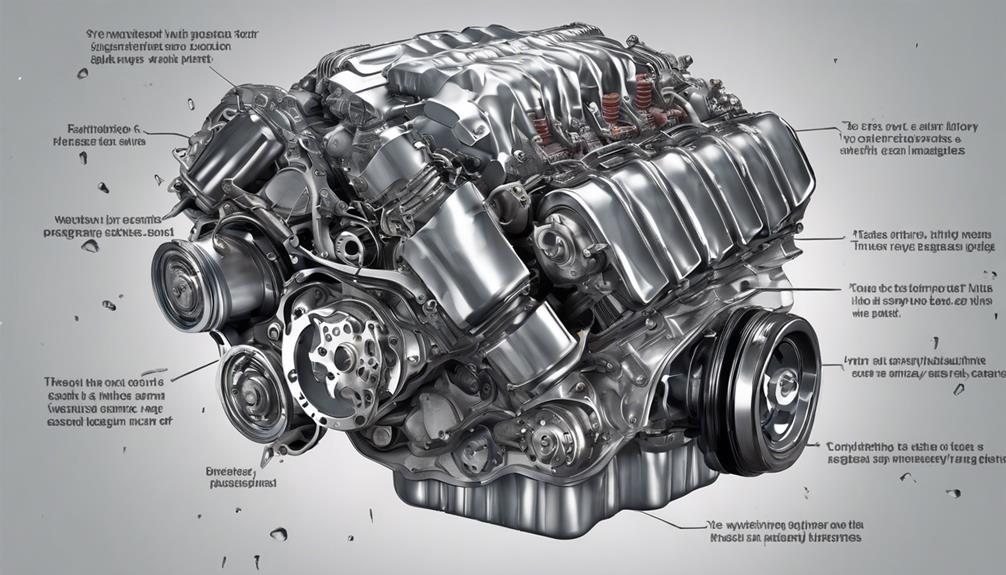
To assess misaligned components in your vehicle, carefully examine the positioning of key engine parts for any deviations from their intended alignment. Alignment issues can greatly impact your driving performance. When engine components such as the transmission, exhaust system, or drivetrain aren't properly aligned, it can lead to handling problems on the road.
One common sign of component misalignment is unusual vibrations felt throughout the vehicle, especially when accelerating or decelerating. These vibrations can indicate that parts aren't working harmoniously due to misalignment. Additionally, if you notice that your steering wheel is off-center or that your vehicle tends to pull to one side even when driving straight, it could be a clear indication of misaligned components.
It is important to address any component misalignment promptly to avoid further damage to your vehicle and guarantee your safety on the road. Regular inspections and maintenance can help prevent alignment issues and maintain excellent driving performance.
Frequently Asked Questions
Can Worn Engine Mounts Affect the Overall Performance of My Car, Other Than Just Causing Vibrations and Noises?
When engine mounts wear out, your car's performance suffers beyond just vibrations and noises. These components play a critical role in maintaining proper alignment and reducing engine movement, directly impacting your car's efficiency and overall performance.
How Long Do Engine Mounts Typically Last Before Needing to Be Replaced?
As you maintain your car, consider this: engine mounts typically last about 5-7 years. Following your maintenance schedule diligently will help you catch signs of wear early. Replacement cost for engine mounts can vary, so budget accordingly.
Are There Any DIY Methods to Temporarily Fix Worn Engine Mounts Until They Can Be Professionally Replaced?
If you're seeking temporary solutions for worn engine mounts until professional replacement, consider using reinforced brackets or rubber spacers to stabilize the engine. Quick fixes like this can help mitigate vibrations and reduce further damage.
Can Worn Engine Mounts Lead to Other Mechanical Issues in the Car if Not Addressed Promptly?
If neglected, worn engine mounts can disrupt engine stability, increasing mechanical stress on surrounding components. Addressing this promptly prevents further damage and safeguards your car's smooth operation. Don't delay; prioritize your engine's health.
Are There Any Warning Signs or Symptoms That Indicate the Engine Mounts Are Starting to Wear Out Before Experiencing Excessive Vibrations or Noises?
If you notice subtle changes in engine efficiency or feel a slight decrease in engine stability and vehicle handling, these could be early signs of worn engine mounts. Addressing these symptoms promptly can prevent increased fuel consumption and potential mechanical issues.
Conclusion
To summarize, if you notice excessive engine vibrations, clunking or banging noises, engine movement during acceleration, visible wear or damage, or misaligned components in your car, it may be a sign of worn engine mounts. It's important to address these issues promptly to prevent further damage to your vehicle.
Remember, neglecting these warning signs could lead to costly repairs down the road. Stay vigilant and keep your car running smoothly for years to come.

